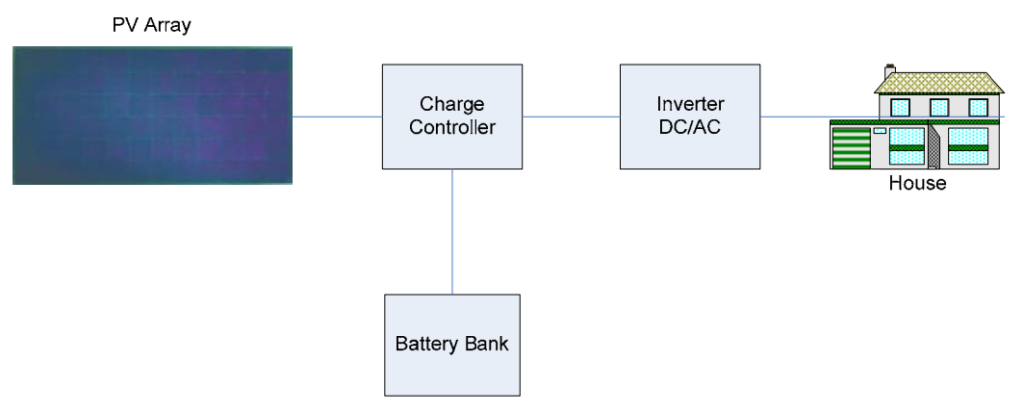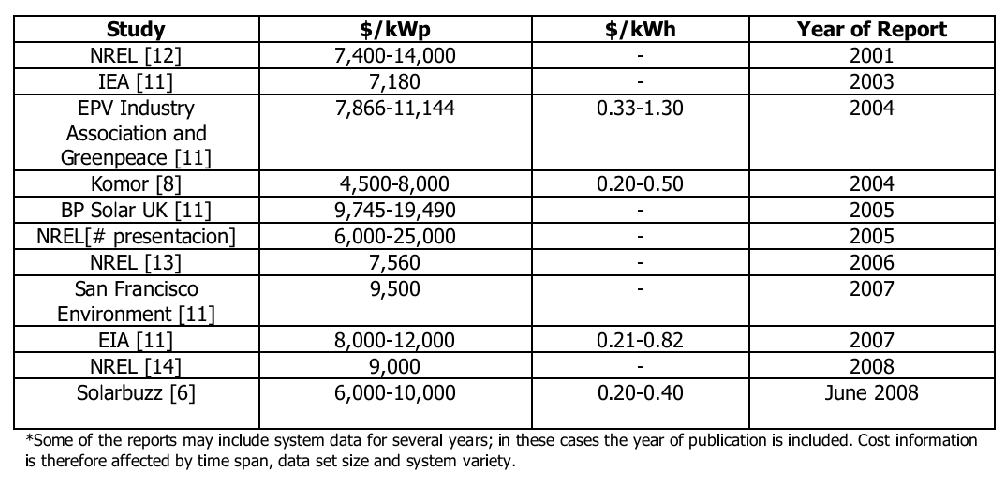A photovoltaic (PV) system is a way of making electricity from sunlight. It has many parts that can be changed to fit different needs. The main parts are PV modules, which are like solar panels. They can be put together to make more electricity. Sometimes you need other things to make the electricity useful or to save it for later. The kind of PV system you need depends on what you want to use the electricity for. There are two main kinds of PV systems:
- Stand-Alone: These systems are not connected to the power grid. They have their own power supply. They can be used for things like homes or businesses that are far away from the grid. They have many parts, like an inverter that changes the electricity from DC to AC, and a battery that stores the electricity. Sometimes they have another power source, like a wind turbine or a diesel generator, to help when there is not enough sunlight. The parts can be changed depending on what you want to power. For example, if you only want to power DC things, like a fan or a light, you don’t need an inverter. You can also connect a PV module directly to a DC thing, like a water pump, and store the water in a tank instead of the electricity in a battery. This can work when you don’t care when the thing runs, as long as there is enough sunlight.

Grid-Tied:
These systems are connected to the power grid. They do not need batteries to save electricity. They can sell or buy electricity from the power company depending on how much they need or make. They need an **inverter** to change the electricity from DC to AC. There are many good things about using grid-tied PV systems instead of the stand-alone ones. Some of them are:
– They can use smaller solar panels to power the same things.
– They need fewer parts to work.
– They can reduce pollution by using the existing power lines.
– They do not have to worry about batteries and their costs or problems. They can add batteries if they want more backup power.
– They can use the power grid as a backup source.
– They can use the electricity they make efficiently. They can help the power grid when they make more electricity than they use.

Hybrid systems**: These systems can use batteries or a generator (or both) and the power grid together. This can make them more reliable and flexible, but also more expensive. Most of the PV systems that people use at home, work, or large places use **flat plate solar modules**, which are like flat solar panels. They are easy to find and buy. Most of the information about how much PV systems cost is based on this kind of technology. We will talk more about this in this article. There are other kinds of PV systems that use different ways of making electricity from sunlight (like **concentrating PV systems**), but they are not as common or popular as the flat plate solar modules.
Electricity Generation with Solar Cells
A **PV cell** is a device that makes electricity from sunlight. Sunlight is made of tiny bits of energy called **photons**. These photons have different amounts of energy depending on their color. When photons hit a PV cell, some of them bounce off and some of them go inside. Only the ones that go inside make electricity. When this happens, the photon gives its energy to a tiny particle called an **electron** in the PV cell (usually made of **silicon**). The electron then leaves its place and joins the flow of electricity in a wire.
To make the PV cell work, the makers put two different kinds of silicon together (called **P-type** and **N-type**). The most common way of making P-type or N-type silicon is adding another element that has more or less electrons than silicon. Silicon has 14 electrons, and 4 of them are in the outer layer. These 4 electrons can bond with other silicon atoms to make a solid. A group of 5 silicon atoms bonded together is called a **silicon crystal molecule**.
The process of adding another element to the silicon crystal is called **doping**. The element used for doping has 3 or 5 electrons in the outer layer. Usually **Phosphorus** is used to make the N-type (Phosphorus has 5 electrons in the outer layer) and **Boron** the P-type (Boron has 3 electrons in the outer layer). In a special kind of PV cell, the top layer is made of a different material than the bottom layer.
The **PV industry** is growing fast because people care about the environment and want to use the free energy from the sun. The industry is trying to make PV energy cheaper than other types of energy and more competitive in the market. PV systems cost different amounts depending on how big they are and how they are connected. Usually, they cost between 4,600 and 19,500 dollars per kW (a measure of power). The most common costs are 8,000 dollars per kW for systems that are connected to the grid, and 14,000 dollars per kW for systems that are not connected to the grid. The cost of making electricity from PV systems is also different depending on how much sun there is in the place where they are installed. In the US, it is usually more than 0.18 dollars per kWh (a measure of energy). Table 5.1 shows the cost information for PV systems in the US and Europe. It is important to know what things affect the cost and how well PV systems work, to see if they are a good option for a certain market.
